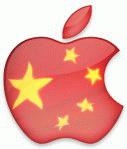
Apple has an undeniably big opportunity in China, but it is still facing some big challenges. As the iPhone maker claimed the top spot as the world’s biggest smartphone vendor in the last quarter (October-December), it actually slipped in the rankings in China and is now in fifth position after ZTE.
But with Apple only kicking off sales of the iPhone 4S in China this January, it’s arguable whether we will see a delayed reaction from the launch of the new device, or whether longer term this is simply a market that will ultimately gravitate to local brands and cheaper devices in the longer term.
The news comes as Proview — the financially-troubled computer maker that is claiming ownership of the iPad trademark in the country (for a device that looks weirdly like an old iMac) — is starting to demand compensation for its troubles. The company has yet to put a figure on how much it would ask for, but one of its creditors suggested $2 billion.
Meanwhile, Apple has seen a huge amount of attention for the launch of its newest iPhone, the 4S, but that hasn’t been shown to have an affect on its sales in the market just yet. According to regional figures from Gartner (via Reuters), in China, Apple accounted for 7.5 percent of sales in Q4, down from 10.4 percent the quarter before.
That put it into fifth position. Ahead of it: Samsung in the lead with more than 24 percent of sales; Nokia now slipped down to second with less than 20 percent compared to 40 percent a year ago; and ZTE with 11 percent.
Analysts, for now, seem to think that the iPhone 4S will not have as big an impact on sales in China as it has in other markets, where the launch of the device in Q4 catapulted Apple to the top of the charts.
One of the key issues is price: the rule of thumb is for a handset to cost about 70 percent of the average monthly salary; the iPhone, selling for 4,988 yuan ($792), is twice the monthly salary. This pricing metric is not one that has gone unnoticed by companies like Huawei, whose smartphones can sell for a quarter of that amount.
Another has been the fact Apple is still only shipping with one carrier — China Unicom — limiting distribution and, crucially, the amount of devices that are getting sold with carrier subsidies on that price. There have long been reports that the country’s third-largest carrier, the CDMA carrier China Telecom, will soon get added to that list.
This is all still, ultimately, a moving target that will need more time to be played out: China now has 1 billion mobile users, but only around 102 million of them using smartphones. That means there’s still a long way to go before this market saturates, slows down, and becomes more predictable.

